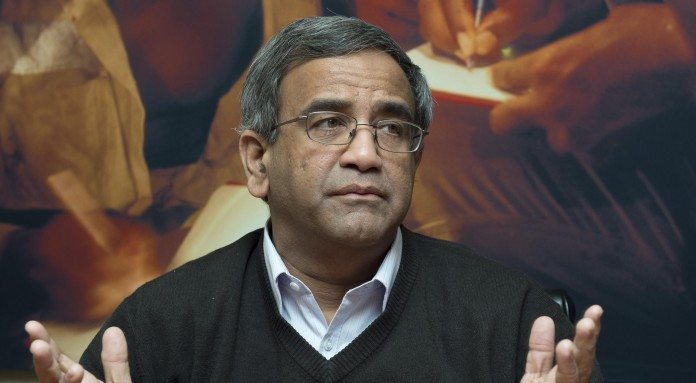
THE pros and cons of AngloGold Ashanti spinning off its South African assets was given a repeat airing several months ago in a report by Goldman Sachs, the bank.
It observed that AngloGold was constrained in its ability to downsize its South African mines so close to the ANC policy and elective conferences where such moves would be seized upon as corporate bloodlessness by those seeking political capital.
Asked in June whether AngloGold would ever resuscitate its 2014 proposal to de-merge the South African mines, senior vice-president of investor relations, Stewart Bailey, told Miningmx that it was “a romantic notion”.
“If you ask Venkat, he’ll say ‘never say never’, but many of the same impediments that stopped the spinoff in 2014 are still there,” Bailey said.
Venkat, or Srinivasan Venkatakrishan, kicked off his first year as CEO for AngloGold in difficult manner by floating the spin-off of the mines along with a $2bn rights issue shareholders thought was too expensive a price to pay.
The rights issue was to lower debt so AngloGold could cut free a company in a lifeboat rather than retaining its feet of clay. At its worst, net debt to earnings before Ebitda (pretax earnings) was 2.5x against covenants with banks of 3x.
AngloGold’s net debt is now closer to 1.4x – around $2bn – but it’s still too high. Set against this is a portion of the South African mines that continue to leak cash.
“AngloGold remains stuck in a difficult position, in our view,” Goldman Sachs said in May. “While the international operations continue to perform strongly, the South African operations continue to be a drag”.
They didn’t perform at all in the first quarter: the group’s average all-in sustaining costs (AISC) were $963 per ounce against South African mine AISC of $1,327/oz. “One option for the company, in our view, could be spinning off its South African operations as it had proposed in September 2014,” said Goldman Sachs.
Since then, AngloGold has announced restructuring of its South African mines – principally TauTona and Kopanang – affecting about 8,500 jobs – a step that that Shaft Stewards Council of the National Union of Mineworkers at AngloGold’s shafts said they would oppose just as Goldman Sachs feared.
Then there was that statement from the Department of Mineral Resources, signed off by mines minister, Mosebenzi Zwane, which read like a regulatory directive, but sounded like a warning especially given the recent history between government and company.
Clearly, the process is going to be difficult, as Goldman Sachs pointed out, but while the restructuring of the South African mines is a political and social problem, it’s localised and born of economic expedience. The fact is that AngloGold can bear surgical restructuring of this ilk as it’s among the most geographically diversified of all the world’s gold majors.
In a recent research note, Moody’s analyst Douglas Rowlings said the agency’s affirmation of AngloGold’s Baa3 rating was based on its geographic diversification: production from South Africa represents only 17% of group pre-tax earnings adjusting for their share of corporate costs.
“At the same time, cash flows generated from its very free cash flow generative international operations are held predominantly offshore in US dollars in the Isle of Man (Aa1 negative) by AngloGold Ashanti Holdings plc which is incorporated there,” he said.
In fact, of its 17 mines across nine different countries, no one geography produces more than 13% of total gold production, a stratification – as Moody’s terms it – that removes the risk of any material production disruption.
The restructuring would see AngloGold cut some 250,000 loss-making ounces per year while some 1.5 million oz in reserves would also be affected. Total first quarter production was 830,000 ounces at an AISC of $1,060/oz (2016: $860/oz).








